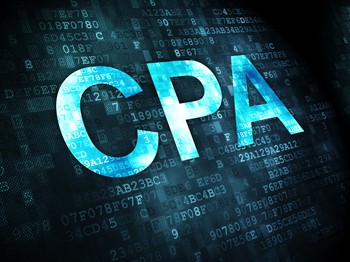Benford’s Law
The Basics
Benford’s Law, also known as the “First Digit Law,” was originally postulated by Physicist Frank Benford in 1938. Benford, after observing sets of naturally occurring numbers, discovered a surprising pattern. Remarkably, the first digit of the number occurred with a discernible frequency.
Benford observed that in numbered lists reflecting real-life data the first digit is one (1) 30% of the time. The remaining possible first digits, i.e., 2, 3, 4, 5, 6, 7, 8, and 9 also recur with regular frequency.
Examples of real life data include cash disbursements, cash receipts, contract payments or credit card charges. There is a pattern in the frequency in which other digits appear as well. The frequencies in which numbers appear are reflected in the following table. Note that there is a pattern beyond the first digit, but it is very small.
Benford’s Law Table
This anticipated distribution of naturally occurring numbers and the frequency with which they’re anticipated can be used to intuit where fraud may exist. It’s important the numbers you’re examining be “Naturally Occuring.” Naturally occurring numbers are found in such  things as population numbers, death rates, sports statistics and financial transactions. Beford’s Law will not work with numbers that are assigned or controlled by people. Examples of numbers that are assigned or controlled are product serial numbers, customer account numbers or, for our purposes, numbers manipulated to perpetrate fraud.
things as population numbers, death rates, sports statistics and financial transactions. Beford’s Law will not work with numbers that are assigned or controlled by people. Examples of numbers that are assigned or controlled are product serial numbers, customer account numbers or, for our purposes, numbers manipulated to perpetrate fraud.
Therein lies the value of Benford’s Law to the auditor attempting to determine where fraud may exist.
With a large population of naturally occurring numbers such as is found in accounting data, auditors should be able to determine irregularities and possible manipulations by applying Benford’s Law to those data sets.
It works like this. Assume you have an employee committing fraud by creating and sending payments to a fictitious vendor. As these numbers are made up, rather than naturally occurring, the leading digits will no longer follow the distribution illustrated in the previous table. For example, let’s assume that these made up numbers have four as the leading digit. The perpetrator might have decided to keep his disbursements to the fictitious vendor under $500.00 to avoid detection. The payments might be $482.00, $452.00, $420.00 and so forth. By performing the first digit test on the disbursement data, auditors should see amounts that have the leading digit four (4) occur more frequently than the anticipated frequency of 9.7% as depicted in the above table.
This happens because human choices are not random, invented numbers are unlikely to follow Benford’s Law.
Here are divergences that might be identified by Benford’s Law.
Most of the amounts that are identified not to conform to Benford’s Law are just under some threshold. Say that number is $5,000. This might be because higher dollar checks receive additional scrutiny, need a human signature and/or counter signature instead of just a machine signature before issuance. By keeping the amounts just below the threshold requiring an additional control, the thief hopes to conceal his fraud.
The digit patterns in checks are opposite to those of Benford’s Law. For example, over 90% of them begin with a 7, 8 or 9. Had each of the vendor’s been tested against Benford’s Law; the set of numbers would have had a low conformity with our expectation thereby signaling an irregularity.
When fraud is detected, you’ll find that the underlying numbers are usually selected to give the appearance of randomness. This happens because Benford’s Law is counterintuitive; people do not naturally assume that some digits occur more frequently than others.
I was explaining Benford’s Law to a friend. He immediately asked me if Benford’s could be used to pick lottery numbers.
Tragically, no. If that were possible, I would not be authoring this paper as I would be far too preoccupied with my extended vacation.
The numbers in a lottery are not random numbers. They are balls labeled with numbers.  They could just as easily be labeled with animals, vegetables or minerals.
They could just as easily be labeled with animals, vegetables or minerals.
The numbers represented in the lottery are uniformly distributed, each number appears only once, and each number has an equal chance to be selected. Benford’s Law does not apply to uniform distributions, only to naturally occurring numbers.
Thank you for visiting the site. Future papers will build on this introduction providing examples of the practical application of this important topic.


